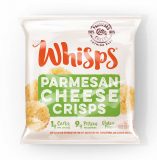Last updated on May 21st, 2018 at 09:34 am
by Lorrie Griffith/editor-in-chief
Schuman Cheese has won more than 100 awards for its cheeses in both domestic and international cheese competitions during its 74-year history. Already this year, the company has won a Best of Class award at the World Championship Cheese Contest for its Cello Hand-Crafted Asiago; its Cello Copper Kettle Parmesan, Cello Artisan Parmesan, Cello Fontal and Yellow Door Creamery Hand Rubbed Fontina also won various levels of awards at the contest.
The company got its start in the World War II years. Arthur Schuman started an importing business in New York with his sons Jerome and Howard in 1945 after forming relationships with Italian cheese companies during the war years, when there was a trade embargo on goods from the Axis countries.
Allison Schuman, senior director of sales and part of the fourth generation of the family to run Schuman Cheese, said many of the relationships formed during that time are still in place today, like with the Zanetti family, the largest producers of Grana Padano and Parmigiano Reggiano cheese.
The Fairfield, New Jersey-based company, which was known as Arthur Schuman Inc. until 2016, has grown its portfolio of imported cheeses over the years, with Allison’s younger brother Ian Schuman, specialty cheese business manager, continuing to seek out partners who “allow us to add traditional and differentiated cheeses to our portfolio,” said Allison, who joined the company in 2008.
But the company also began investing in U.S. cheese production nearly 20 years ago, and now about 70 percent of the company’s production is done here in the U.S.

“We’ve always been importers and teachers of cheesemaking, and while we still do a lot of importing, we continue to focus on investing in and growing our domestic business,” Schuman said.
The company has production facilities in Turtle Lake, Fall Creek and Monfort, Wisconsin; Elgin, Illinois; and its New Jersey headquarters.
Asked if cheese connoisseurs still tend to embrace imported cheeses above U.S.-made cheeses, Schuman said that’s not necessarily the case anymore.
“I think that notion is rapidly changing,” she said. “There has been a large rise in specialty—both large and small—producers within the U.S. who are really passionate about cheesemaking and passionate about cultures and making cheese that’s representative of the terroir we have here in the U.S.
“I actually believe that with most consumers there’s been a big boom in the trust in domestic cheese producers, and that’s led to a rise of a lot of specialty niche producers in the U.S. as well.”
She said U.S. cheesemakers are a bit more “free” to experiment with cheeses. They might make cheese with a mix of milks—goat, sheep and/or cow—or wash the rinds of the cheeses with unexpected flavors (more details on that below).
“We’re not bound by old world traditions or consortiums that make us make the cheese the same way every single time throughout generations,” Schuman said. “We can play around and get creative with the cultures we’re using, or the wash on the cheese, or the format of the cheese, aging profiles, the spices and inclusions. It makes it a very interesting climate in the U.S. today.”
She added, “I think the majority of young people are passionate about food and trying new things. It’s led to a vibrant cheese culture in the U.S.—and passionate cheesemakers. So I think, in many ways, the U.S. is on the cutting edge of the cheese market, and it’s creating more exciting things than are being done anywhere else in the world.”
Restaurant meals inspire in-store cheese purchases
Schuman said that specialty cheese trends often grow out of people’s visits to restaurants.
“What we find is that the cheese case in general can be a very tricky place for people to navigate, even if you are a foodie or a cheese lover, so one way people can become a little more fluent in cheese is by eating out at restaurants and seeing new names of cheeses there,” she said. “That’s a way for them to try it before they go and buy it at retail.”
Gruyeres and other Alpine-style cheeses “are definitely having a moment in the sun with restaurants,” she added.
Alpine cheese refers to any cheese indigenous to the Alps, which has borders on Switzerland, France, Austria and Italy. They are typically semi-firm to hard and can be aged up to several years. In addition to Gruyere, which is probably the best known, there is Emmentaler, Raclette and Comte, among many others.
“These are washed rind cheeses; they have a very fruity, nutty, distinctive style,” she said.
Spice is another restaurant trend that is impacting the cheese case, Schuman added.
“There are a lot more fusion restaurants and people are becoming more open to trying new things,” she said. “We’re seeing that reflected very nicely in the retail space.”
 Spice can be added to cheese in a variety of ways, whether through rubbing spices into the rind or adding spices or inclusions (like peppers) into the cheeses themselves.
Spice can be added to cheese in a variety of ways, whether through rubbing spices into the rind or adding spices or inclusions (like peppers) into the cheeses themselves.
Sometimes, they are “unlikely pairings where people didn’t necessarily think it would taste great, but it really does,” she said. “One of our cheeses is a rubbed fontina, and one of the new flavors we have is a Mayan cocoa coffee. People look at it and say, ‘What is this?’ It’s cocoa, it’s coffee, it’s spicy, and you wouldn’t think it paired well with the cheese, but it is absolutely gorgeous. Some of these things that nobody would have thought of, people are starting to get excited by.”
While wine and cheese are a classic pairing, Schuman says consumers are increasingly pairing cheeses with craft beer and whiskey. On the food side, they’re also branching out from the traditional bread, cracker and fruit pairings to jams, mustards, honey, balsamic vinegar, etc.
“I think the beauty of accompaniments is that you can try it both ways—in its natural form or really trick your mouth into creating something unique with a pairing,” Schuman said.
Squarely in the snack category
 Cheese has long been a go-to snack, and more people than ever may be choosing cheese for a snack thanks to its clean ingredients and its role in today’s popular ketogenic diets as well as its calcium and protein content.
Cheese has long been a go-to snack, and more people than ever may be choosing cheese for a snack thanks to its clean ingredients and its role in today’s popular ketogenic diets as well as its calcium and protein content.
“People aren’t necessarily fearful of eating high-fat foods as long as they’re wholesome,” Schuman says. “Cheese is so versatile; we have 100 percent cheese snacks that offer a clean ingredient deck. The cheese we make, it’s typically one ingredient or two ingredients if you have inclusions, etc., but it’s very wholesome. High protein, great source of calcium. And some, like Parmesan, are naturally lowfat cheeses.”
The company makes sure to offer its cheeses in a variety of forms—sliced, cubed, grated, shredded or shaved—for the user’s convenience.
“We’re always looking for new ways to make it more consumer friendly. We try to line up with the consumer trends of how people are eating it,” she said.
A couple of years ago Schuman Cheese came out with a newfangled cheese snack called Whisps, which recently became available in a single-serve package.
“It’s easy and portable, and people can throw a wholesome snack in their lunch or their kid’s lunch. We always consider packaging to be a huge part of our innovation as well.”
Helping consumers at the cheese case
Retailers are always looking at how they can educate consumers about cheeses, Schuman says.
“When you step up to a cheese case, it can be overwhelming, even for a seasoned veteran who knows cheese and understands it,” she said. “There are so many cheeses, and there doesn’t seem to be any rhyme or reason to how it’s being merchandised. One way we’re always trying to help is working with retailers, with buyers, to help them figure out how to organize, how to simplify, how to educate and make it a more friendly, approachable place to visit. That comes down to a lot of merchandising.
“Rome wasn’t built in a day; it takes some time to get these things going, but we’re always looking at new ways, whether it’s merchandising it in a way that is more visible to the consumer, or using shipper cases to help give additional information that may not be so easily seen, or the labels, or using signage or the environment itself to help consumers know the different flavor notes of different cheeses—I think is going to be really helpful.”
Some retailers, like Kroger (which has partnered with Murray’s Cheese in a number of stores), Whole Foods Market and others, have added cheesemongers in their stores.
“Having a human to ask questions helps drive sampling,” she said.
And sampling is very important in the cheese case.
“If you are going to spend $15, $20 on a piece of cheese, and you don’t know if your family is going to like it or if you are going to like it, that can be a barrier that we have to work through. Any time you can talk to somebody or get a little bit of tasting incorporated, that is incredibly helpful.”
She added, “Anything retailers or cheese companies like ourselves can do to help that process along or make it a little less intimidating, that’s going to help get people who haven’t tried everything to take a little bit of a risk and branch out of their comfort zone.”
Keep reading:
Harmons Specialty Cheese Buyer Honored By International Organization
IDDBA: Consumer Interest In Hispanic And Full-Fat Cheese Rising






